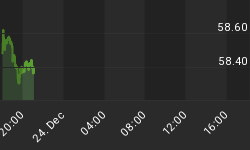While the Western European euro zone is experiencing better-than-expected growth, the boom-town economies of Eastern Europe might have seen the best of their days after four years of major growth and a stellar 2017.
Currencies in the region have weakened against the euro in the first year-half as investors continued to shun risky emerging markets. Hungary‘s forint has dipped, hitting the last two years’ low, while Poland’s zloty, the Czech koruna and Romania’s leu have all lost value.
Economic trends in the region are starting to edge down, according to Bloomberg, as risks increase--fueled not only by inflation and rising interest rates, but also by regional labor shortages and the ever-present threat of aggressive U.S. trade maneuvers.
It’s not critical—it’s simply uncertain. Growth has been great, but everyone’s now wondering if it hasn’t plateaued. And if it has—how far will it fall, and how fast?
Growth in Polish GDP slowed slightly, to 5.1 percent year-on-year. Czech GDP cooled to 2.3 percent from 4.2 percent in the first quarter. Bulgaria’s economic expansion slowed to 3.4 percent,
However, Hungarian GDP growth unexpectedly steeped to 4.6 percent, the fastest pace since 2014, a result of buoyant agriculture, services and manufacturing. Related: Inflation Wipes Out Wage Growth
Romania, which has hiked interest rates thrice this year to fight inflation, saw its expansion inch up to 4.1 percent from 4 percent. Slovakia’s economy grew 4.1 percent, against 3.6 percent in the first quarter, according to Bloomberg.

(Click to enlarge)
There are concerns that domestic demand and weaker demand from the euro zone will start to weigh on these economies. Domestically, demand faces a slowdown over higher inflation, interest rates and less favorable fiscal policy in some venues. In the euro zone, demand faces a decline due to capacity constraints.
Poland, in partiuclar, has seen its growth stunted by a sharp drop in demand from its key trading partners.
For the European Union’s former communist members, only Bulgaria and Slovakia are expected to avoid a growth slowdown this year—if forecasts cited by Bloomberg prove correct.
In it’s interim Summer 2018 forecast, the European Commission noted that the “Romanian economic boom has started to wind down”.
“After reaching a post-crisis peak of 6.9% in 2017, real GDP growth decelerated to 4.0% (y-o-y) in the first quarter of 2018. The main driver of the slowdown was a contraction in private consumption as inflation weighed more heavily on real disposable income,” the report said.
Still, export growth for Romania remained “very robust” in the first quarter, and managed to outpace import growth.
Related: Did North Korean Hackers Just Steal $13M From Global ATMs?
For Hungary, the EC said “the cyclical upswing of domestic demand is set to moderate in 2019, leading to slower GDP growth”.
In the Czech Republic, while “GDP growth is forecast at a solid rate of 3.0% for 2018 and 2.9% in 2019, thanks mainly to robust domestic demand”, “on the downside, net exports are likely to detract from GDP growth, particularly in 2018”.
Slovenia’s contribution to growth by net exports is “likely to turn negative as domestic demand strengthens, supporting by growing employment, wages and favourable financing conditions,” the EC said, adding that “business investment growth is forecast to continue at a rather high rate on the back of high capacity utilization and a tightening labour market amid stronger balance sheets and improved profitability”.
Across Eastern Europe, one key factor for a potential slowdown is pure sustainability of outsized growth for 2017.
But if you look at the real estate market—there’s no peak in sight, and no one’s ready to sound any alarms bells just yet because of this critical economic indicator.
The Eastern European Construction Forecasting Association (EECFA) in June released its Summer 2018 forecasts for the next two years, and things are looking pretty good.
According to the EECFA, five countries--Bulgaria, Croatia, Romania, Serbia and Slovenia—were posting strong economic growth that was fueling construction, with some of the region’s housing markets seeing record-breaking results. Enough so that there is talk of potential overheating.
“We think these markets are far from it, though,” said the EECFA. “At the same time, construction labor shortage, due to economic migration from these countries to Western Europe, is one factor giving cause for further concern in the future.”
By Damir Kaletovic for Safehaven.com
More Top Reads From Safehaven.com
















